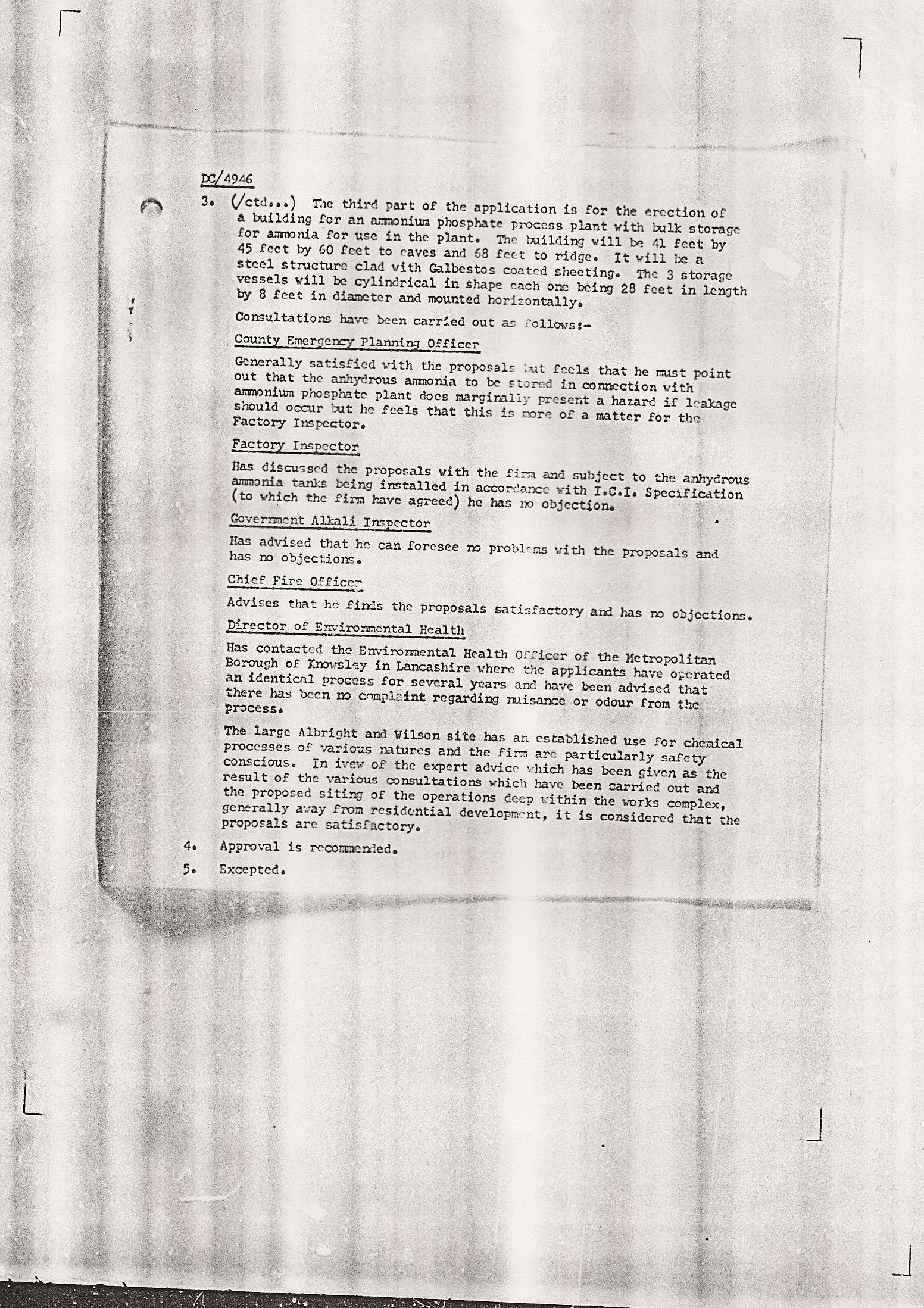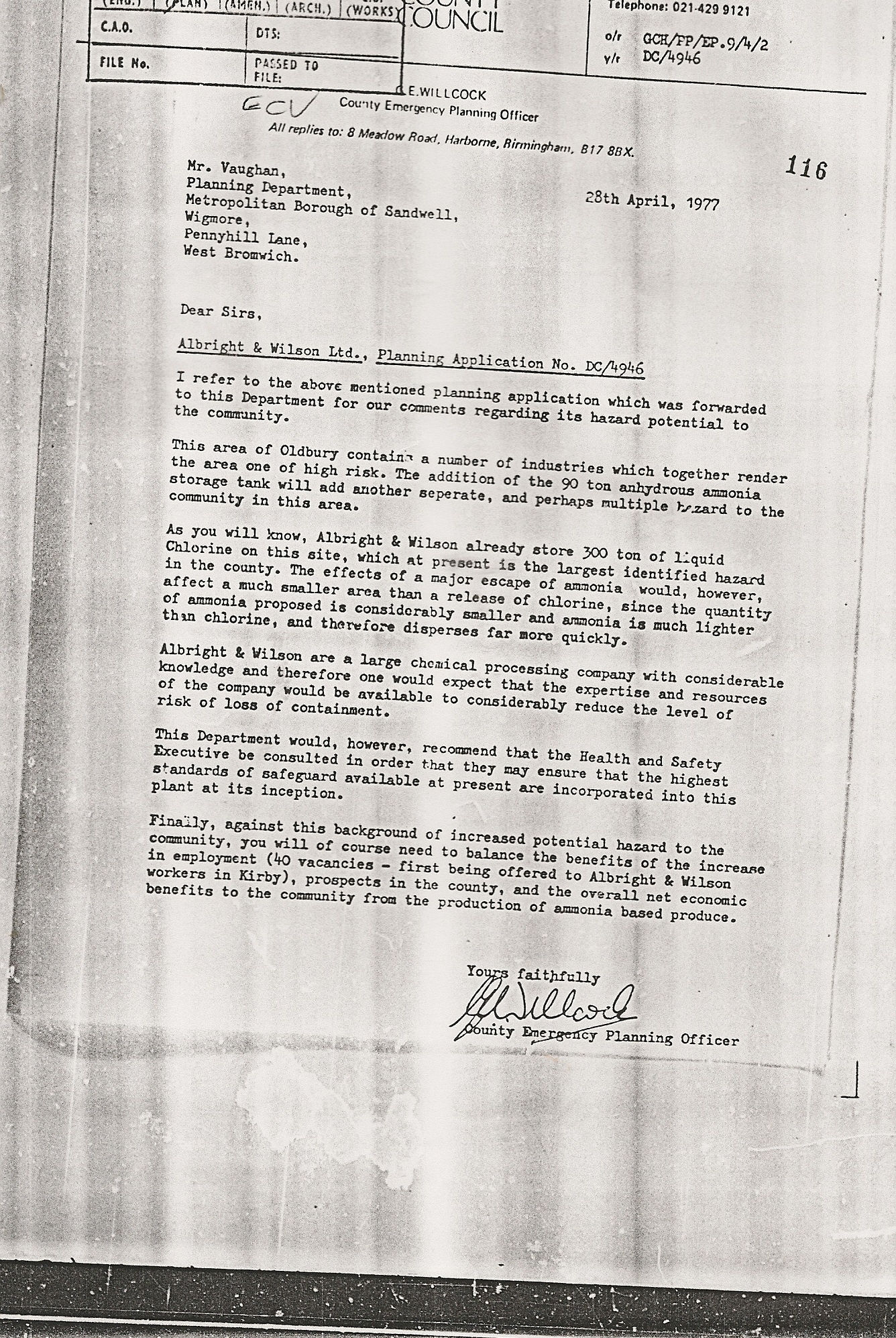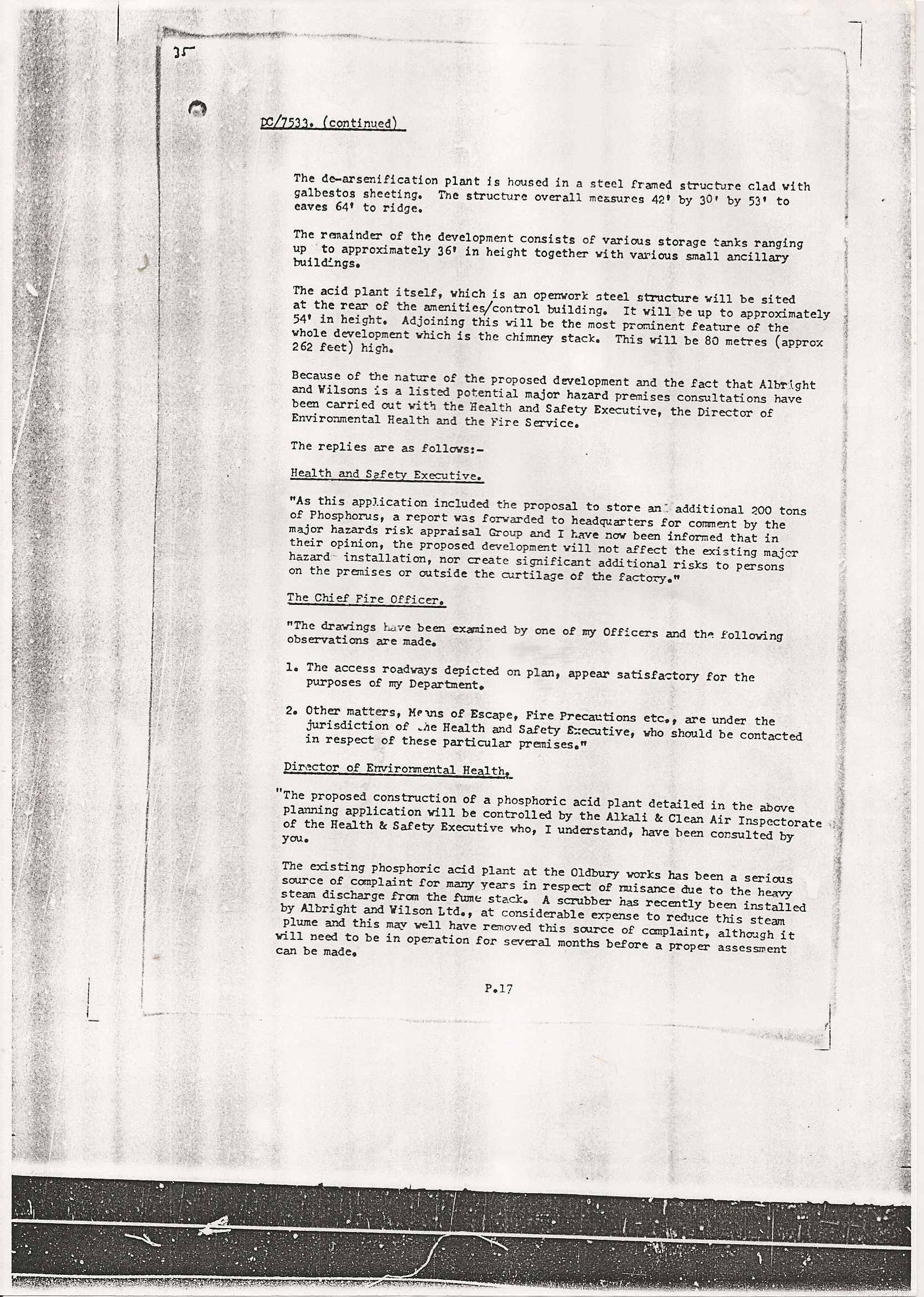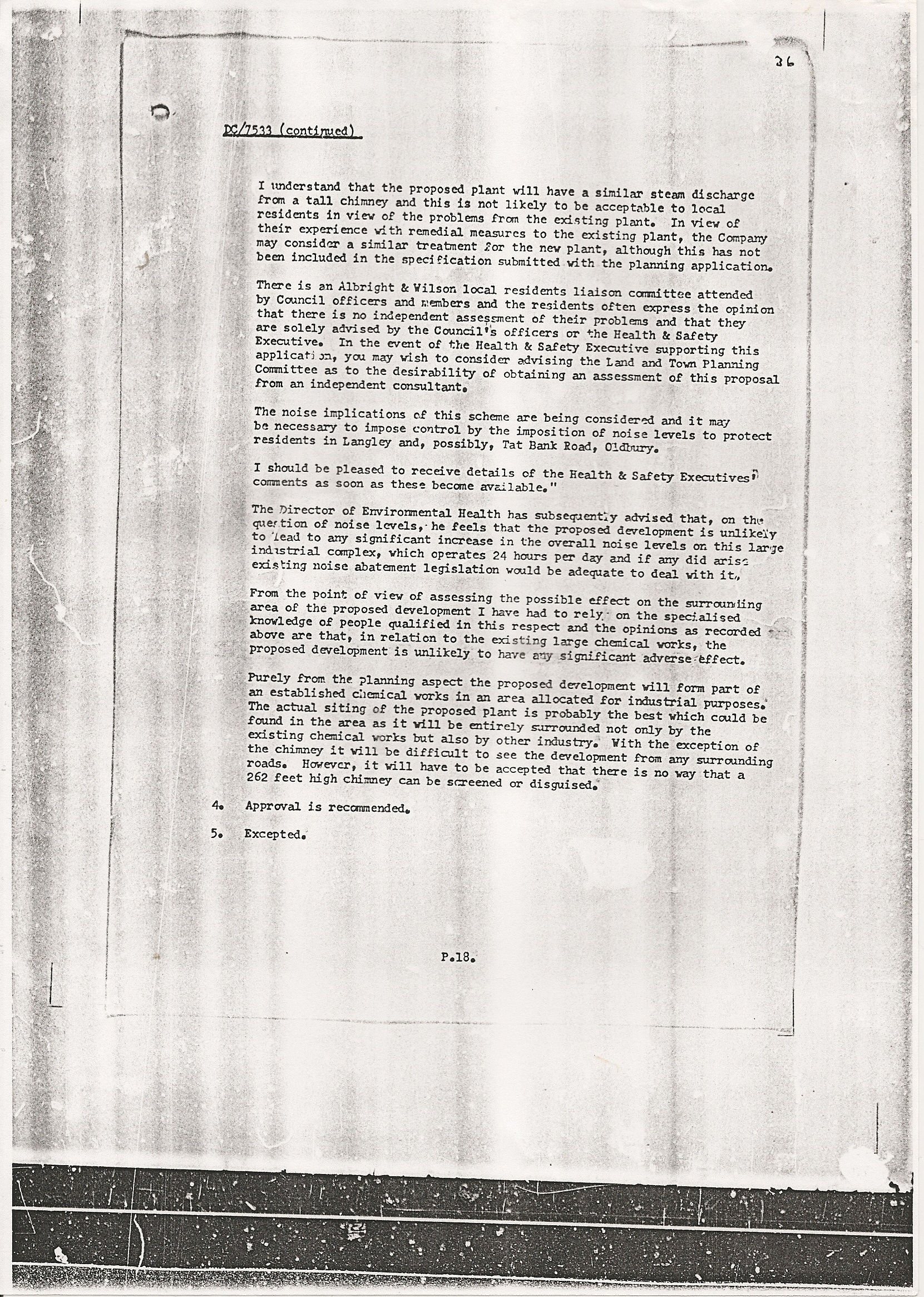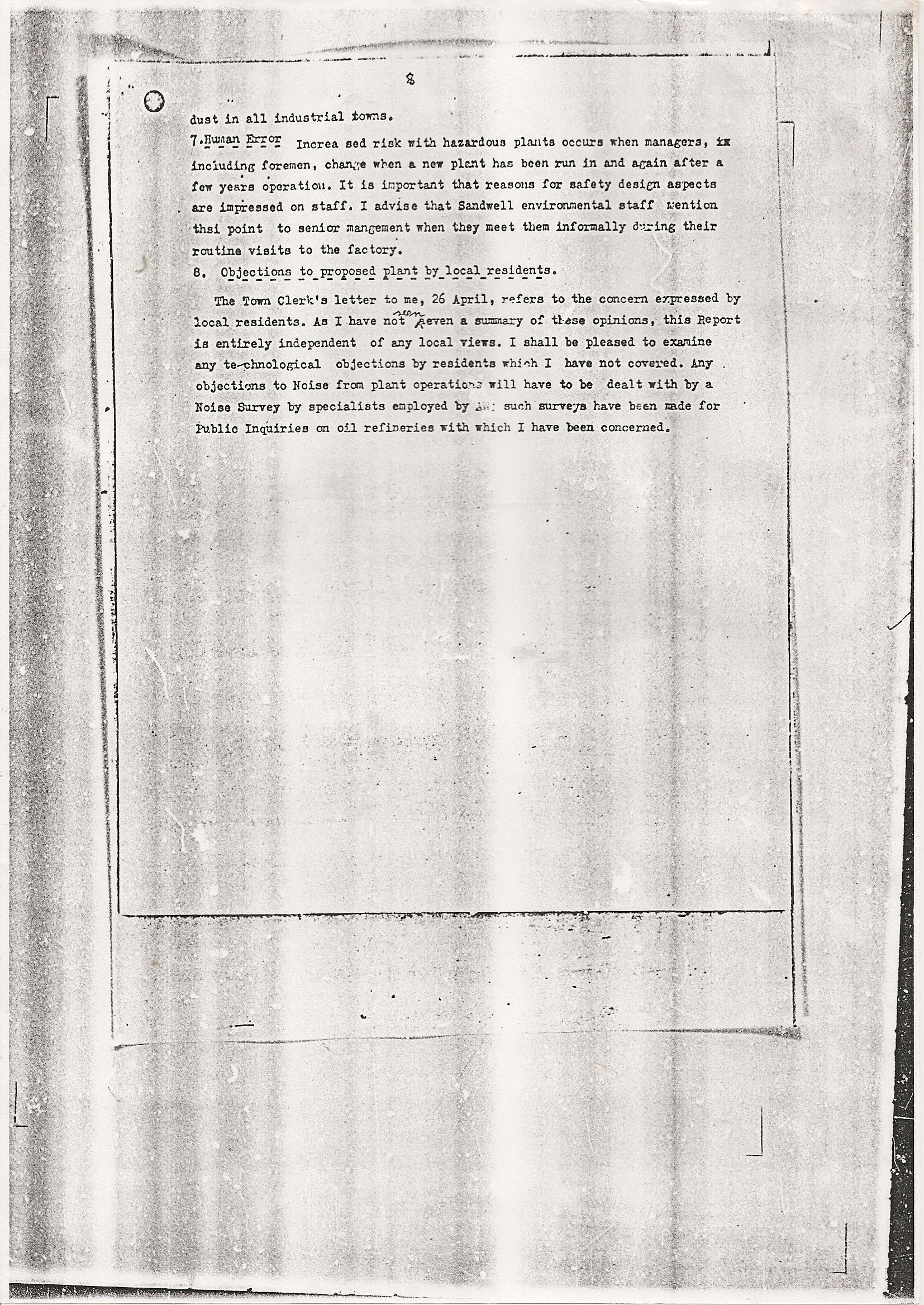1970’s

1. W7185 Exhaust stack increased in height by 30 feet.

2 DC/4946 An interesting application demonstrating how a planning officer bases his opinion on matters he admits to know nothing about- the answer to ask other people who also appear to know nothing about the area being a prominent part of the Ministry of Supply agency factory erected during the war without planning permission- and all the chemical contamination that went with it! NB Knowsley closed down as a result of a catastrophic fire.

DC6922 An article from January 1980 Albright world “Chimney is latest Oldbury landmark”
With the byline “New 200 foot steel chimney to provide Oldbury with 2 new boilers and an associated water treatment plant.” Reveals information not contained in the application, and how “unexpected” materials on the Trinity Street site come to light during construction, according to the site project engineer.
“When we prepared the site for the new chimney, we had to excavate the ground and discovered a mass of unexpected pipework and concrete, said Ken Dodge.
The site had previously been occupied by an old soda ash store and the bricklayers shop and before that by the process plant. Some of the material dug out was probably well over a hundred years old Ken added.”
NO MENTION IN THE ARTICLE AS TO WHERE THIS MATERIAL WAS REMOVED TO!
DC 7533
Sandwell Council on this rare occassion sought the advice of an outside consultant- perhaps the reason why it was not determined. An important note on the application states
“There is an Albright and Wilson local residents committee attended by council officers and members and the residents often express the opinion that there is no independent assessment of their problems and that they are solely advised by the council’s officers or the Health and Safety Executive.” HOW LITTLE HAS CHANGED!!!
Mr Gordon Nonhebel considered the following risks associated with such an application. His Key observations
“Undesirability of building hazardous factories near large centres of population”
“When phosphorus manufacture was started over 100 years ago, Oldbury was sparsely populated. It is today accepted that new factories involving risks such as fires and escape of dangerous gases, should be built away from large centres of population- this has been mentioned in reports by The Royal Commission on Environmental Pollution and in the annual reports by the alkali inspector”
smoke clouds
“Any phosphorus fire would emit large quantities of phosphoric oxide P205, fume of which could blanket large areas of the town, leading to confusion and panic among the inhabitants, especially in low wind conditions and at night. The smoke from a large fire would be equivalent to the release of smoke from thousands of bombs.”
“phosphorus fires
Although phosphorus fires should be readily quenched by water, an uncontrolled fire would emit large volumes of P. vapour into a cloud of air in which most of the oxygen had been consumed. Incoming gusts of fresh air into this vapour cloud might then cause a mild explosion. This is a potential risk which should be considered by HSC hazard branch.”
His words would be quite prophetic some 31 years later when almost exactly the scenario he suggests occurred at the Trinity Street site!
DC/7823 Micromet is a water softener, a sodium/calcium phosphate of low solubility.
DC 9778 A specification of the work to be carried out, and part of a plan of the site as it stood at the end of the 1970’s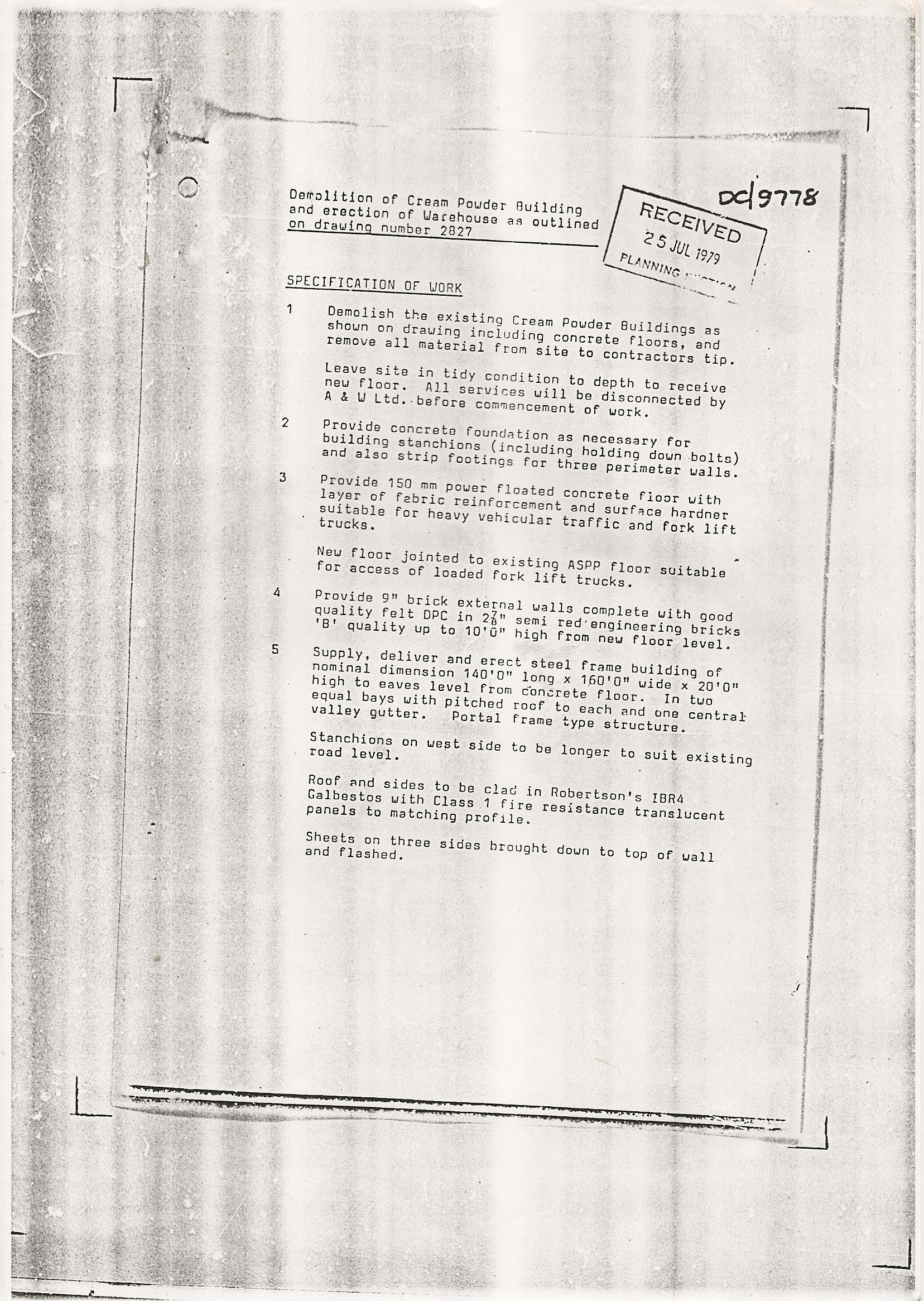
DC/10136 “It is proposed to construct a new warehouse for the storage of pentasulphide and empty drums within the Oldbury works site, on the site of the existing tin shop and the former TCP plant and bomb shop.”



